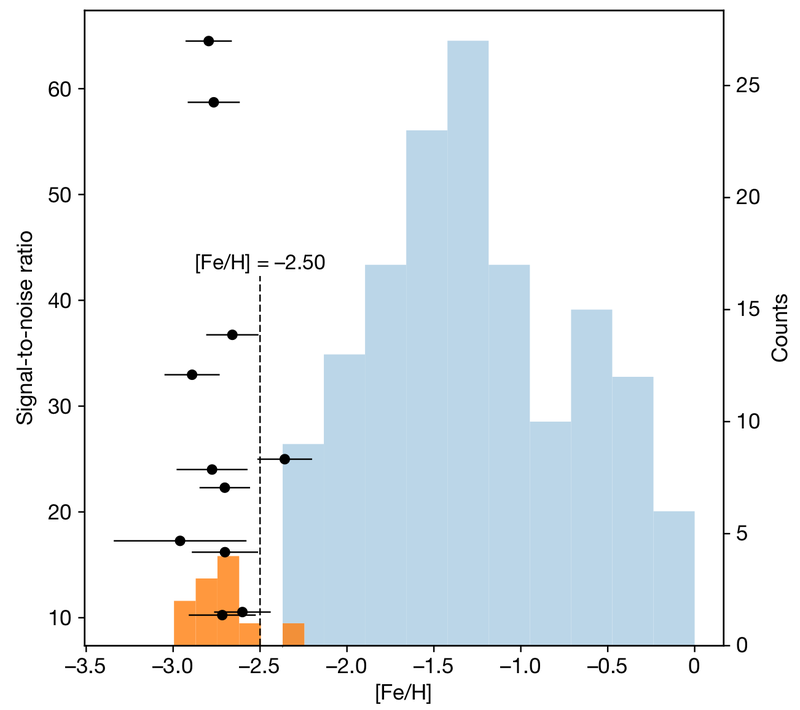The tidal remnant of an unusually metal-poor globular cluster
Wan, Zhen and S⁵ Collaboration
Globular clusters are some of the oldest bound stellar structures observed in the Universe. They are ubiquitous in large galaxies and are believed to trace intense star-formation events and the hierarchical build-up of structure. Observations of globular clusters in the Milky Way, and a wide variety of other galaxies, have found evidence for a `metallicity floor', whereby no globular clusters are found with chemical (metal) abundances below approximately 0.3 to 0.4 per cent of that of the Sun. The existence of this metallicity floor may reflect a minimum mass and a maximum redshift for surviving globular clusters to form—both critical components for understanding the build-up of mass in the Universe. Here we report measurements from the Southern Stellar Streams Spectroscopic Survey of the spatially thin, dynamically cold Phoenix stellar stream in the halo of the Milky Way. The properties of the Phoenix stream are consistent with it being the tidally disrupted remains of a globular cluster. However, its metal abundance ([Fe/H] = -2.7) is substantially below the empirical metallicity floor. The Phoenix stream thus represents the debris of the most metal-poor globular clusters discovered so far, and its progenitor is distinct from the present-day globular cluster population in the local Universe. Its existence implies that globular clusters below the metallicity floor have probably existed, but were destroyed during Galactic evolution.
The Phoenix stream was the first stream discovered using Dark Enegy Survey data (see my 2016 publication). Since then it was followed-up by the S⁵ collaboration and it turned out to be the most metal-poor globular cluster remnant in the Galaxy. Read more in Zhen Wan's paper. The paper pre-print can be found here.

Metallicity versus spectroscopic signal-to-noise ratio for Phoenix stream members. A histogram of the metallicities of Phoenix member stars with signal-to-noise ratios greater than 10 is presented in orange (right axis); the metallicity distribution for individual globular clusters in the Milky Way is shown in blue 4 (right axis). The signal-to-noise ratios of individual Phoenix members are also shown in black points (left axis) with errorbars (1σ; see ref.13 for detail discussion). The dashed line indicates the location of the empirical ‘metallicity floor’ at [Fe/H] = −2.5, above which sit all globular clusters in the Milky Way, the Local Group and other nearby galaxies. [Source: the paper]
Here are some of the media outlets that covered this story:
- A torn-apart globular cluster provides a window into the Milky Way’s past - Sky & Telescope
- Scientists Found an Ancient Graveyard of Anomalous Stars in Our Galaxy's Halo - Vice